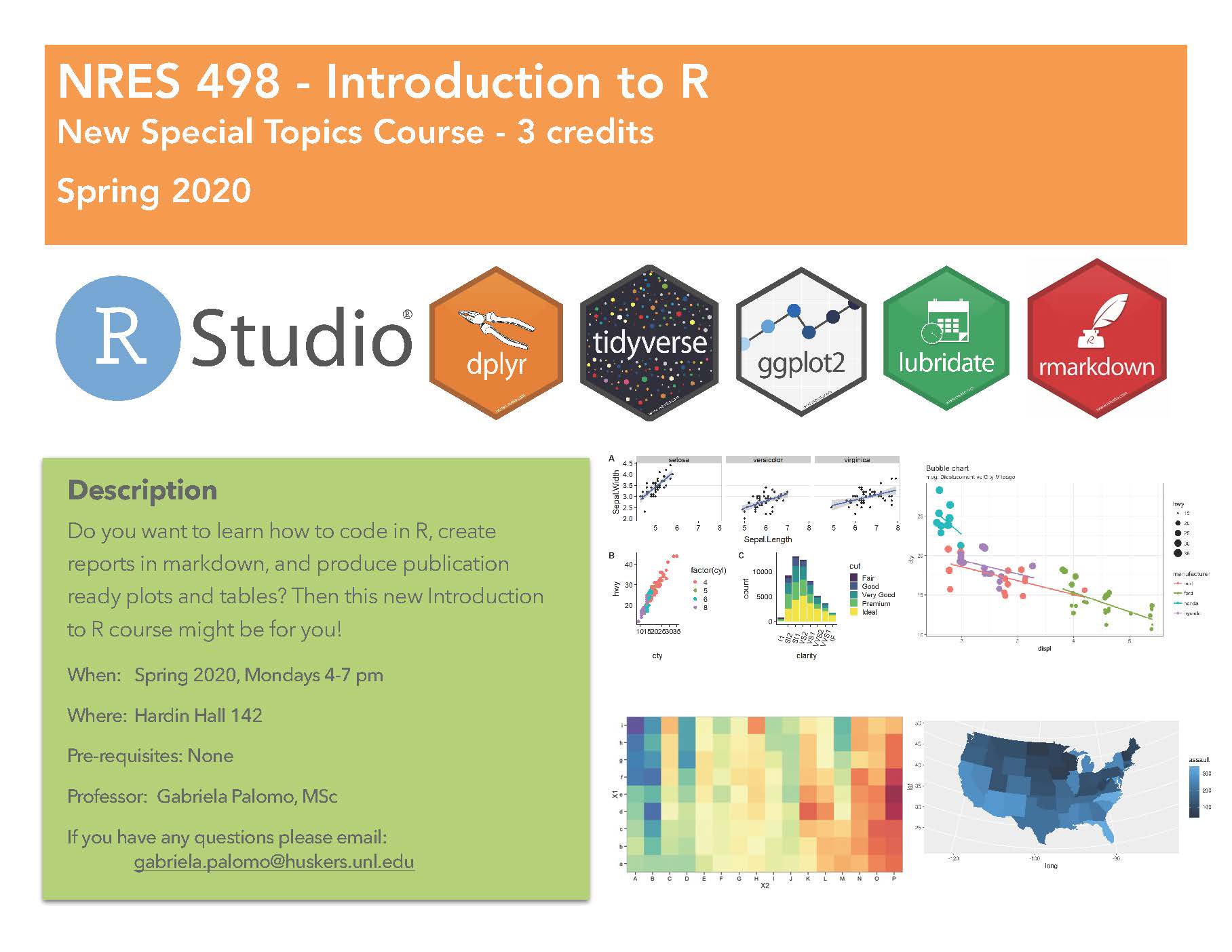
A new RStudio course has been designed for undergraduate students at the School of Natural Resources to boost their coding and data analysis skills using R, an open-source coding platform used in a variety of professions.
NRES 498: Introduction to R will be offered from 4 to 7 p.m. on Mondays during the Spring 2020 semester in Hardin Hall Room 142.
“In the past, a similar but more advanced course has been offered in SNR by Dr. Chris Chizinski, but it was mostly for grad students,” said Gabriela Palomo-Munoz, a doctoral applied ecologist graduate student in SNR, who will be teaching the course. “My idea was to have an introductory R coding class for undergrads.”
Throughout the course of the semester, students will be given two main projects to develop (Psst.: There will be no exams.). The first project will require students to make “The World’s Ugliest Graph.”
“I want to teach them the foundations of what makes a good publication-ready graph,” Palomo-Munoz said. She wants students to explore: What makes a good graph? And what color combinations should they use?
“They will have to break all those rules to produce this ugly graph; for example, using red for the axis titles and fluorescent green for the background and using a tiny font,” she said. “I want them to learn how to code these graphs in R so that by altering the code I provided in class they will be able to explore the functions of that code further.”
During the course, students will learn how to input data from Excel or other software programs into R; how to clean and organize that data; how to create tables and graphs that are publication ready; how to export those graphs and tables; and how to create presentations and reports in R using Markdown.
Palomo-Munoz wants students to learn coding can be fun and to feel comfortable with the software package many of them may use in their future careers.
“Coding and statistics is something a lot of students feel intimidated by because they have this notion that it’s hard or complicated,” Palomo-Munoz said. “Even though it’s not always easy, I want them to learn where to go for help and what resources are out there to help them improve their coding skills.”
In talking with graduate students, Palomo-Munoz learned that a class in R is what most wished they’d taken or had available in their undergraduate education. Taking Palomo-Munoz’s class could be a resume boost and curriculum advantage for those applying for graduate school, but it also is important for those whose careers will require them to produce reports or statistical analysis of scientific data no matter whether they pursue a job in the public, private or government sector.
“R is a living language that is constantly evolving,” Palomo-Munoz said. Learning R means students can continue to grow and learn and update their skills long after they graduate.
“R is not the only software scientists use to analyze their results, but it’s the one that most scientists use across all branches because it’s free and open source,” she added. Scientists create packages that do whatever the science needs and upload it to CRAN where everyone can download it and use it for free as well.
And the hope is that once the science is accessible to all, solutions to key environmental problems can be derived faster.
Natural Resources